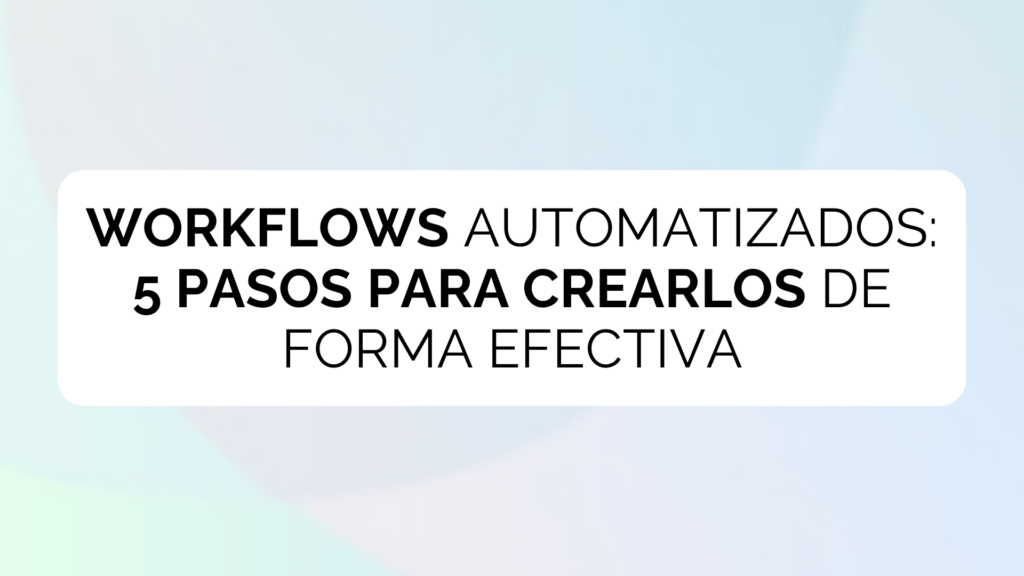Automated Workflows: 5 steps to create them effectively

In this blog, we have often commented on how important customer interactions are. We are well aware that customers are no longer just looking for products or services, but expect to find personalised and consistent experiences throughout their journey with the brand.
This is where the workflow automation email marketing becomes a very useful tool, allowing you to guide users through a carefully designed customer journey, from first contact to final conversion.
What is an automated Workflow?
An automated workflow is a series of e-mails that are sent automatically subscribers based on their behaviour, interests or stages in the buying cycle. Instead of sending generic emails to all your contacts, workflows allow you to personalise the experience, ensuring that each customer receives the right message at the right time.
What are the benefits?
Its main benefits are:
Large-scale customisation: A workflow allows you to send highly personalised emails on a large scale, tailored to the specific needs of each user.
Through automation, you can deliver personalised and relevant messages that align with the specific needs and interests of your users, which increases open rates and prevents your emails from ending up in the spam folder.
Operational efficiency: Manually managing an email marketing campaign for a large database is virtually impossible. Automating email sequences frees up your time, allowing you to focus on other strategic areas of your business.
Improving customer experience: Automated mailings can guide customers through the sales funnel, increasing the likelihood of conversion and improving customer satisfaction.
5 steps to create effective Workflowss
Define your objectives: Before designing a workflow, it is essential to be clear about the objectives you want to achieve with each sequence.
Segment your audience: Divide your contacts into segments based on criteria such as behaviour, interests, or stage of the buying cycle.
Design the content of mailings: Create emails that are relevant to each segment and each stage of the workflow. Make sure each message has a clear call to action (CTA).
Configure the Triggers: Triggers are the actions that trigger the sending of emails in your workflow, such as a list subscription, a click on a link, or a cart abandonment.
Monitor and optimise: Once your workflow is up and running, it is important to monitor its performance and make adjustments to improve the effectiveness of the campaign.
Example of automated workflow
Example 1. Welcome campaigns. These are probably the best known. It can be said that the main objective of this type of mailing is to make a good first impression in the relationship with the customer.
How it works is clear. When a new user subscribes to your list, a series of welcome emails are automatically triggered. These messages can include an introduction to your brand, useful content related to their interests, or a special offer to encourage them to make a first purchase.
Example 2. Recovery of abandoned trolleys. You've probably ever wanted to make an online purchase, you haven't made up your mind and you've left the product you were looking at in the shopping cart.
Therefore, the big goal for brands is to get users to finish that purchase they have left unfinished.
The way this workflow works is easy: if a user adds products to their cart but does not complete the purchase, a reminder email is triggered to show them what they left behind. In these, it is customary to include an additional incentive, such as a discount, to give the customer one more reason to place the order.
Ultimately, workflow automation not only simplifies the email marketing process, but can also improve the way you interact with your customers. From welcome to conversion, workflows allow you to create a seamless and effective customer experience.